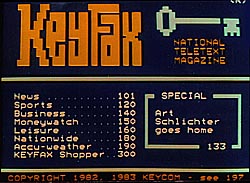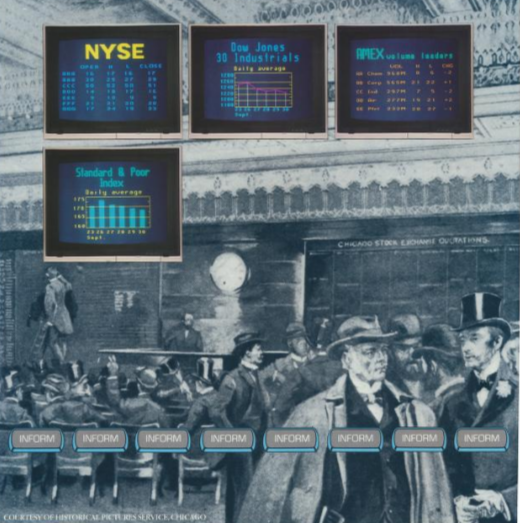

Jupiter Ace, a British computer from 1982. It used Forth instead of BASIC and it could display more text characters on the screen than most of its competitors (64×48 compared to the more common 40×24). It used the same font as ZX Spectrum.


Jupiter Ace, a British computer from 1982. It used Forth instead of BASIC and it could display more text characters on the screen than most of its competitors (64×48 compared to the more common 40×24). It used the same font as ZX Spectrum.


Keyfax was the US version of the British Ceefax teletext. It was launched in 1982 but was shut down already by 1984, partly due to problems with getting the British teletext decoders approved in USA. Instead, Keyfax became a videotex service in Chicago and changed from the British standard to the American NAPLPS. But that failed too and Keyfax went bust in 1986. More info.
Post updated in 2024.
An interactive videotex art work, part of A Hummer’s campaign to run for mayor of Toronto, 1982. A Hummer ended up at 2nd place with 10% of the votes. More here.


Scott E Fahlman suggests a use of :) and :( in September, 1982. This happened on a bulletin board at Carnegie Mellon University in Pittsburgh, USA. It caught on pretty fast, and in November there were already several variations.
There are many older examples of emoticons, but this is likely what popularized emoticons as we know them today.


Back to Nature by Bob Carr, 1982. This is the C64-version of the game that he released for the PET in 1980.